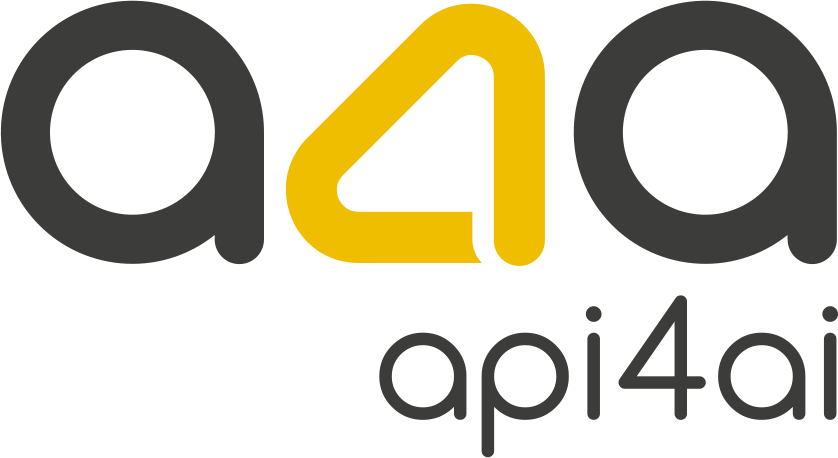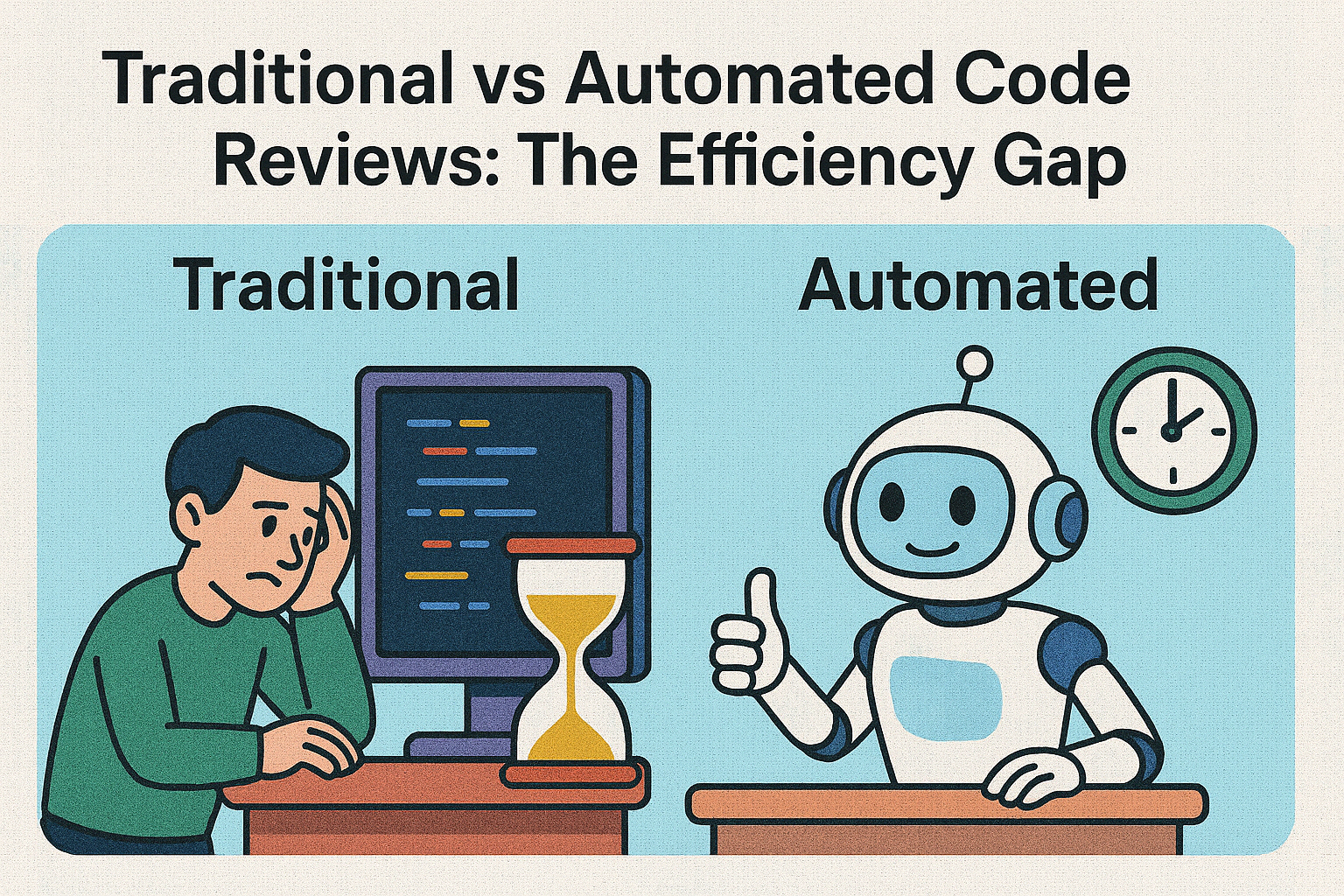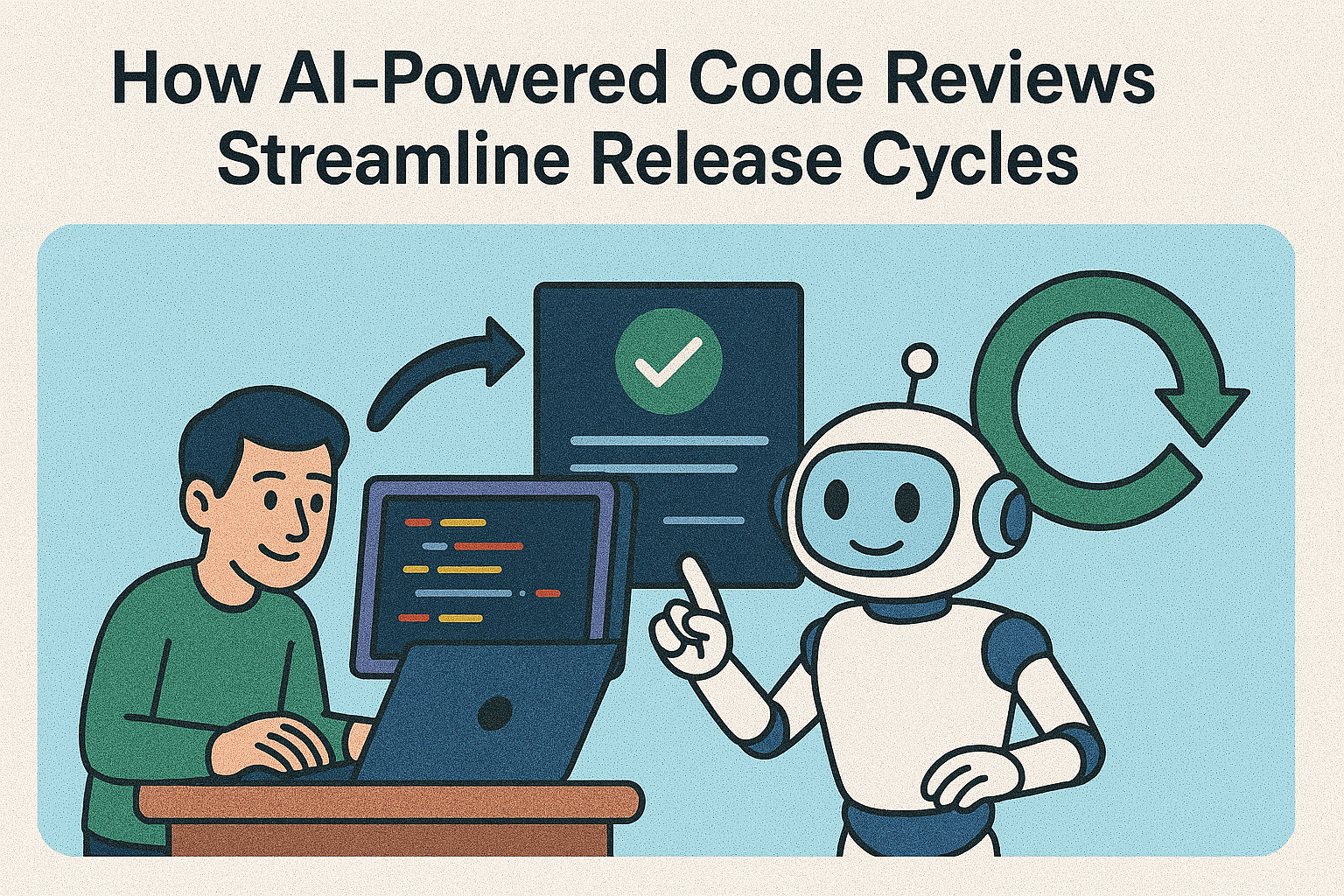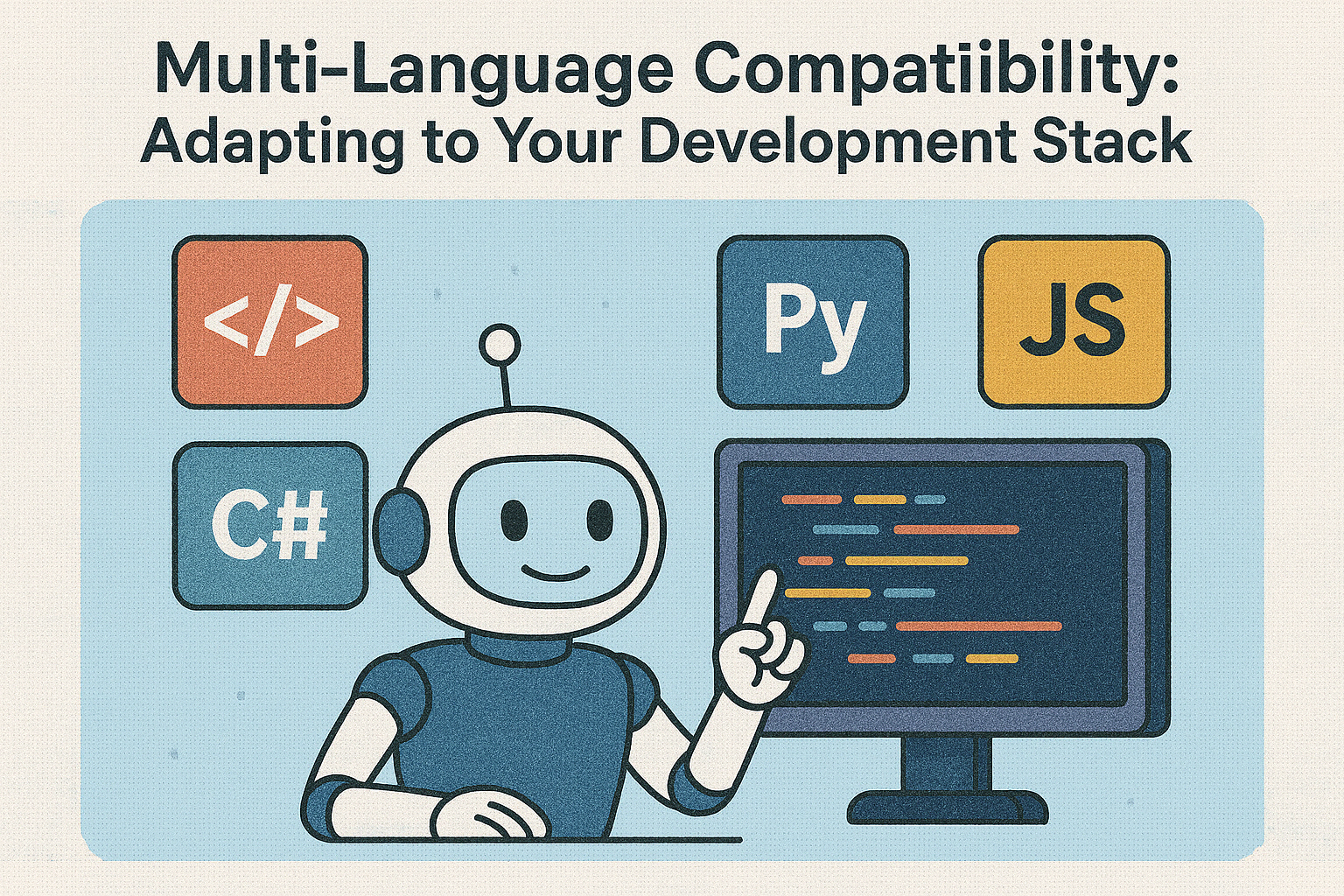Cutting Release Times with Automated AI Code Reviews
Introduction: The New Standard in Software Development
The ability to release software quickly and consistently is no longer a nice-to-have — it's a key competitive advantage. Whether you're a startup racing to launch new features or an enterprise striving to maintain market leadership, shortening the time between development and deployment is critical. Users expect constant improvements, security fixes must be delivered promptly and businesses can't afford to fall behind.
Yet, speeding up release cycles often comes at a cost. Rushed code reviews can lead to missed bugs, performance issues or overlooked security vulnerabilities. Manual review processes, while essential for ensuring code quality, can become a bottleneck — especially as teams scale and codebases grow more complex. Waiting hours or even days for a merge request to be reviewed can delay entire sprints, block team members and slow down overall delivery.
This is where automated AI-powered code reviews come into play. By leveraging the power of large language models (LLMs) and intelligent automation, teams can now streamline their review processes without sacrificing quality. These systems analyze code as soon as it’s submitted, providing detailed feedback within minutes. What used to take hours of back-and-forth between reviewers can now be handled almost instantly — reducing task-switching for developers and accelerating time to release.
More than just a productivity booster, automated code review represents a shift in how modern development teams operate. It's a fundamental upgrade in the development pipeline, helping engineers focus on what matters most: building great products.
Traditional vs Automated Code Reviews: The Efficiency Gap
Code reviews are a critical part of modern software development, acting as a checkpoint to maintain code quality, catch bugs early and ensure consistency across a project. But the way code reviews are conducted can make or break a development cycle. While manual reviews have been the standard for years, they are often the source of unnecessary delays and inefficiencies. AI-powered alternatives are changing that — and fast.
Where Manual Code Reviews Fall Short
Despite their importance, manual code reviews come with a set of recurring challenges that can disrupt development workflows.
Slow turnaround times: Manual reviews rely on human availability. Developers are busy and reviewing someone else’s code often gets pushed down the priority list. As a result, merge requests may linger unreviewed for hours — sometimes days — creating bottlenecks that delay the entire release pipeline.
Human errors and oversight: Even experienced reviewers can miss things. It's easy to overlook bugs, outdated patterns or subtle security flaws when juggling multiple tasks. Fatigue, distractions or lack of context further increase the chances of critical issues slipping through.
Workflow friction: In many teams, code reviews can become a source of tension. Waiting on others leads to frustration. Feedback can be vague or inconsistent, depending on the reviewer. This slows down collaboration, causes rework and makes it harder to maintain a productive flow.
Manual reviews, while valuable, are increasingly difficult to scale — especially in fast-paced, collaborative environments where frequent updates are the norm.
The Automated Advantage
Automated AI code review APIs offer a powerful alternative by addressing the limitations of manual reviews head-on. These tools use advanced large language models to evaluate code quickly, accurately and consistently.
Rapid analysis: Instead of waiting for a colleague to review a merge request, an AI system can begin analyzing code the moment it's submitted. This eliminates queue times and speeds up the overall development cycle.
High accuracy: Trained on millions of lines of code, AI models can detect common mistakes, potential bugs and best practice violations across multiple languages. They apply the same standards every time — no matter the reviewer or day of the week.
Reduced downtime for developers: Faster reviews mean developers don’t get stuck waiting. They can receive feedback while the code is still fresh in their minds, make adjustments right away and keep moving forward without context switching or delays.
By removing human bottlenecks and bringing consistency to the review process, AI-powered code reviews create a smoother, more efficient development pipeline. The result? Quicker releases, fewer errors and happier, more productive teams.
How AI-Powered Code Reviews Streamline Release Cycles
Speed is everything in modern software development, but it must be balanced with quality. This is where AI-powered code reviews prove invaluable — not only do they maintain high standards, they also fit seamlessly into existing workflows, making the path to production faster and smoother than ever.
Seamless Integration into CI/CD Pipelines
One of the biggest advantages of automated code review tools is that they integrate directly into popular Continuous Integration/Continuous Deployment (CI/CD) systems like GitLab and GitHub. There’s no need to change how your team works — the AI becomes part of the existing process.
Developers continue to push their code to feature branches and open merge requests as usual. Instead of waiting for a team member to pick up the review, the AI steps in immediately, running a comprehensive code analysis behind the scenes. This integration ensures that reviews happen consistently and without manual intervention, eliminating unnecessary steps in the pipeline.
Instant Feedback with Webhook-Triggered Reviews
At the heart of this automation is the use of webhooks — lightweight, event-based triggers that activate the AI reviewer the moment a merge request is created or updated.
Here’s how it works:
A developer opens a merge request in GitLab (or GitHub).
The system sends a webhook to the code review API.
The AI instantly begins analyzing the changes, file by file.
Within minutes, the AI posts comments directly in the merge request discussion, alongside any human reviewers.
This means feedback is delivered while the code is still top-of-mind for the developer, reducing context-switching and speeding up revisions.
Faster Merge Requests, Faster Releases
By eliminating delays in the review process, AI-powered tools drastically reduce the time it takes for code to get approved and merged. Developers don’t have to wait hours or days for review — feedback comes almost immediately. This shortens the cycle from coding to production and removes one of the biggest obstacles in modern software development.
The result? Teams release features faster, respond to issues more quickly and maintain momentum throughout their sprints. In many cases, AI-assisted reviews have been shown to reduce feature release times by up to 30%, giving organizations a clear competitive edge.
With less time spent waiting and more time building, AI code review is helping development teams move at the speed of innovation.
Leveraging Large Language Models (LLMs) for Precision
At the heart of modern AI-powered code review tools lies one of the most transformative technologies in software engineering today — large language models (LLMs). Originally developed to understand and generate human language, these models have rapidly evolved to handle code with impressive fluency. Now, they are helping developers write cleaner, safer and more efficient software — at speed.
Understanding Code Beyond Syntax
Traditional static code analyzers rely heavily on rule-based logic. While useful, these systems often miss the bigger picture — they can flag formatting issues or detect certain patterns, but they don’t truly understand why a piece of code might be problematic or how to improve it in a meaningful way.
LLMs change that. Trained on millions of code examples and documentation across various programming languages, these models don’t just recognize syntax — they understand intent and context. This deep semantic understanding allows them to:
Spot logic errors and subtle bugs that might not violate syntax but could cause runtime issues.
Suggest improvements that go beyond surface-level formatting — like simplifying complex expressions or proposing more efficient alternatives.
Identify inconsistencies with project conventions, naming standards or architectural patterns, helping teams maintain a consistent codebase.
Specific Capabilities: More Than Just Spelling Checks for Code
AI models powered by LLMs bring a wide range of capabilities to the table, making them much more than automated linters. Key features include:
Bug detection: LLMs can identify common pitfalls such as null pointer risks, unhandled exceptions or unnecessary memory usage.
Readability improvements: They can recommend changes that make code easier to follow, which improves long-term maintainability — like breaking down large functions or renaming variables for clarity.
Enforcing coding standards: Whether your team follows PEP8, Google's Java style guide or custom rules, LLMs can help enforce these guidelines consistently across every merge request.
These features ensure that every piece of reviewed code not only works — but is easier to understand, maintain and build upon.
Real-World Example: CRken in Action
A great example of these capabilities in a real-world setting is CRken, an automated code review API developed using advanced LLMs. Integrated with GitLab, CRken reviews code changes as soon as a merge request is opened. It analyzes each modified file, offers targeted comments and highlights issues with precision — from missed edge cases to violations of project-specific conventions.
CRken demonstrates how LLMs can enhance the review process not by replacing human reviewers, but by amplifying their productivity and accuracy. Teams using tools like this benefit from faster releases, fewer bugs in production and cleaner, more reliable codebases.
As LLMs continue to evolve, their ability to understand complex code structures and development patterns will only grow — unlocking even greater levels of precision and speed in the software delivery process.
Multi-Language Compatibility: Adapting to Your Development Stack
Modern development teams rarely work in a single programming language. From frontend to backend, from mobile apps to embedded systems, projects today are built using a wide variety of technologies. This diversity is both a strength and a challenge — especially when it comes to maintaining consistent code quality across the entire stack.
That’s why language-agnostic AI code review solutions have become essential tools for today’s software teams. Instead of building custom review workflows for each language, teams can rely on one system that works universally — saving time, reducing complexity and improving consistency.
Support for the Most Popular Languages
Leading AI code review APIs are designed to handle the languages that power modern software. These include:
JavaScript – The backbone of web applications and frontend frameworks.
Python – Widely used in data science, automation and backend services.
Go – Known for its speed and simplicity in cloud-native and microservice architectures.
PHP – A mainstay in web development and content management systems.
Java – Dominant in enterprise environments, Android apps and backend systems.
C# – Common in Microsoft ecosystems, desktop applications and game development.
Kotlin – The modern choice for Android development and JVM-based systems.
C++ – Critical for performance-intensive applications like game engines, embedded software and simulations.
By supporting all these languages out of the box, AI-powered tools ensure that every part of your codebase — regardless of platform or purpose — benefits from automated review.
No Extra Configuration, No Headaches
One of the biggest advantages of using an AI code review API is its plug-and-play nature. There's no need to build or maintain separate linters, rule sets or static analyzers for each language. Once integrated into your development platform (like GitLab or GitHub), the AI automatically recognizes the language in each file and applies relevant review logic.
This flexibility makes it easy to adopt AI reviews across teams with different tech stacks. Whether you're running a monolithic legacy application or managing dozens of microservices written in different languages, the review process stays consistent — fast, accurate and automated.
By choosing a multi-language compatible AI review solution, teams reduce overhead, simplify workflows and ensure that every line of code — no matter the language — meets the same high standard. It's a smart step toward more efficient and scalable software development.
Real-World Benefits of Implementing Automated Reviews
AI-powered code reviews aren’t just a theoretical improvement — they’re delivering measurable results in real development environments. Teams that integrate automated review tools into their workflow often experience noticeable gains in efficiency, quality and overall team morale.
Faster Releases, Fewer Delays
One of the most immediate benefits of automated code review is speed. By eliminating the wait time for manual reviews, development teams can significantly reduce the time it takes to merge and deploy new features.
In many cases, teams report up to 30% faster release cycles. This kind of acceleration can make a huge difference in competitive markets, where being the first to ship a feature or patch can directly impact user satisfaction and business performance.
Less Fatigue, More Focus
Manual code reviews, while necessary, often interrupt a developer’s flow. Waiting for feedback or constantly switching between writing code and reviewing someone else’s can be mentally exhausting. This leads to context switching, lower efficiency and in the long run, developer burnout.
With automated reviews, developers receive immediate feedback, allowing them to stay in the zone and make changes while the code is still fresh in their minds. This reduces frustration, keeps the workday more focused and boosts productivity across the board.
Smarter Collaboration Through Clear Feedback
Collaboration can be tricky when reviews are inconsistent or vague. Developers may get feedback that’s too brief, unclear or based on personal style preferences. Automated code reviews help solve this by providing consistent, structured and actionable feedback that’s easy to understand and apply.
This consistency builds trust in the review process and helps all team members — from junior to senior — understand what’s expected in terms of code quality and best practices. It also frees up human reviewers to focus on higher-level concerns, like design decisions or architectural improvements.
A Real-World Example: CRken in Action
A good example of automated reviews working in practice is CRken, a code review API powered by large language models. Integrated with GitLab, CRken analyzes code as soon as a merge request is opened, providing detailed, line-level feedback directly in the platform. Development teams using CRken have noted faster reviews, clearer suggestions and a more predictable release rhythm — all without changing their existing workflow.
By reducing delays, improving feedback quality and supporting developer well-being, automated code reviews bring both short-term and long-term benefits. They’re not just a technical upgrade — they’re a strategic move toward better software, happier teams and faster delivery.
Future Trends and Final Thoughts
Automated AI code reviews are already transforming how software teams work — but this is just the beginning. As technology continues to evolve, we can expect even greater capabilities, tighter integrations and broader adoption across all types of development environments. Staying ahead of these trends isn’t just smart — it’s essential for teams looking to stay agile and competitive.
What’s Next: Smarter, Deeper and More Connected
AI models are improving rapidly. Future versions of large language models will offer even deeper semantic understanding of code, allowing them to detect complex logic flaws, understand project-specific context and even provide architectural recommendations. Reviews won’t just catch mistakes — they’ll help shape better solutions.
Another trend on the horizon is deeper integration into the software development toolchain. Beyond GitLab and GitHub, AI-powered reviews will increasingly work alongside project management tools, testing frameworks and deployment pipelines. This means smoother handoffs, automated documentation and more intelligent feedback loops that align code quality with business goals.
And finally, further automation is coming. We’re moving toward systems that not only detect issues but can suggest full rewrites, generate test cases or even fix minor problems automatically — all while learning from your team’s preferences and past decisions.
Why Now Is the Time to Act
With software delivery cycles getting shorter and user expectations rising, the cost of slow or error-prone development is higher than ever. Waiting for traditional review processes to catch up can put your team at a disadvantage. Teams that embrace automation early are already seeing faster releases, better collaboration and fewer bugs in production.
Adopting AI-powered code reviews now allows organizations to build future-ready pipelines that scale with their needs. It creates space for developers to focus on creativity, product thinking and innovation — instead of spending valuable time waiting for manual feedback or fixing preventable issues.
Taking the First Step Toward Smarter Development
The path to faster, more efficient software development starts with small, smart steps. Exploring AI-driven code review solutions — such as those already integrated with Git platforms and powered by large language models — can make an immediate impact on your team’s productivity and long-term success.
The future of software engineering is clearly automated, intelligent and fast. Teams that invest in these technologies today won’t just catch up — they’ll leap ahead.






